| HOME |
|---|
DRACO
The Dragon
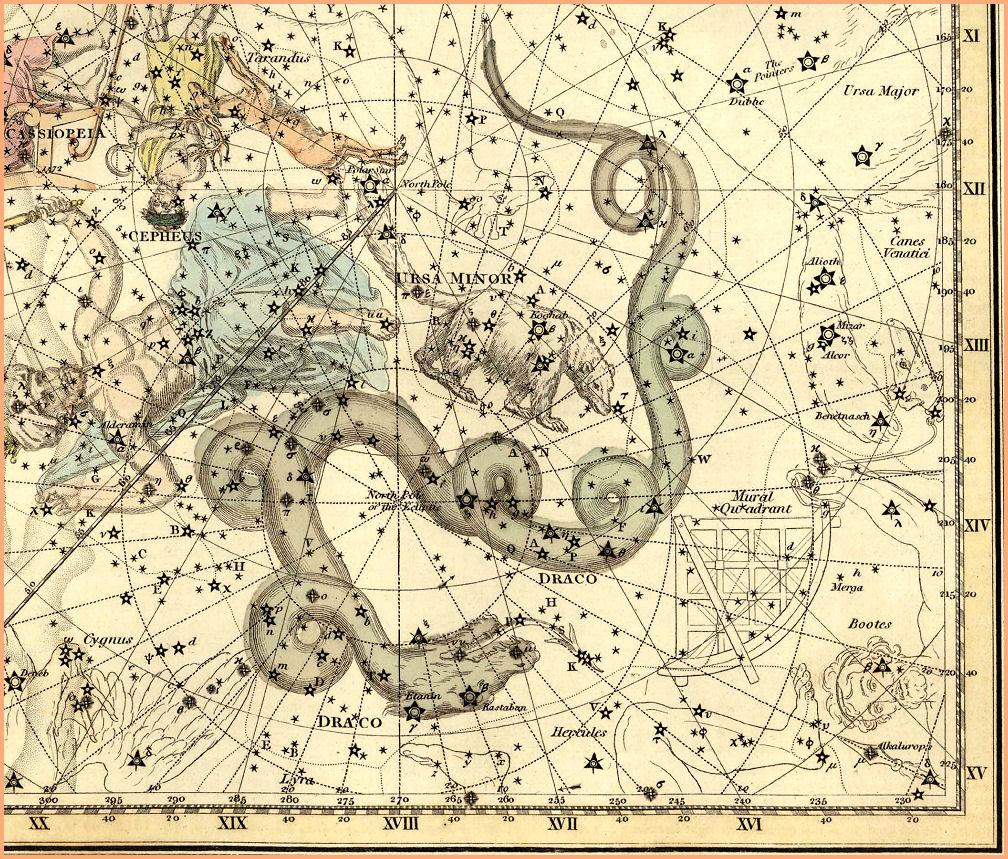
Draco - Celestial Atlas by Alexander Jamieson - 1822
| HOME |
|---|

Draco is one of the circumpolar constellations that never sets for viewers north of 35 degrees north latitude. The ancients saw it as predestined to circle the north star, Polaris, - tail first - for eternity, never to rest below the horizon.
In western mythology Draco was the dragon that guarded the golden apples of the garden of the Hersperides. Unfortunately for the dragon, the eleventh labour the gods enforced upon Hercules was to dispatch the dragon and steal the golden apples. Naturally, a terrific battle ensued, and when Hercules finally vanquished the dragon, its form was placed in the heavens with Hercules kneeling over it, club raised, to commemorate the feat.
At first glance, Draco might appear rather unimpressive to modern eyes, but the ancients attached enough significance to the constellation to give formal names to no less than thirteen of its stars.
The designated alpha star in Draco is named Thuban, according to R.H. Allen the traditional Arabic name for the entire constellation. It is an A0IV blue/white subgiant located quite far out at about 350 light years. There is spectroscopic evidence of a small companion star, but little is known about it. Unlike most alpha stars Thuban is far from the brightest star in the constellation, ranking only seventh in luminosity with a magnitude of 3.65. Its alpha title is a result of its historical significance as the North Pole Star back in the time of the pyramids, when Egyptians and Babylonians and others took their astronomy/astrology very seriously, and afforded the fixed pole star of the day much significance.
Polaris has not always been the North Star, and it will not always be the North Star in the future. Because of a slight wobble in Earth's rotation called precession, its axis traces a counter-clockwise circular path through the stars that takes 28,000 years to complete, and gradually moves from one North Star to the other. As the image below shows, around the time of the pyramids, the North Star was Thuban, in the constellation Draco. In the year 4500 the star Alrai in Cepheus will point the way north. And if there are still Humans on Earth in the year 14000, they will call the bright star Vega, in Lyra the North Star.
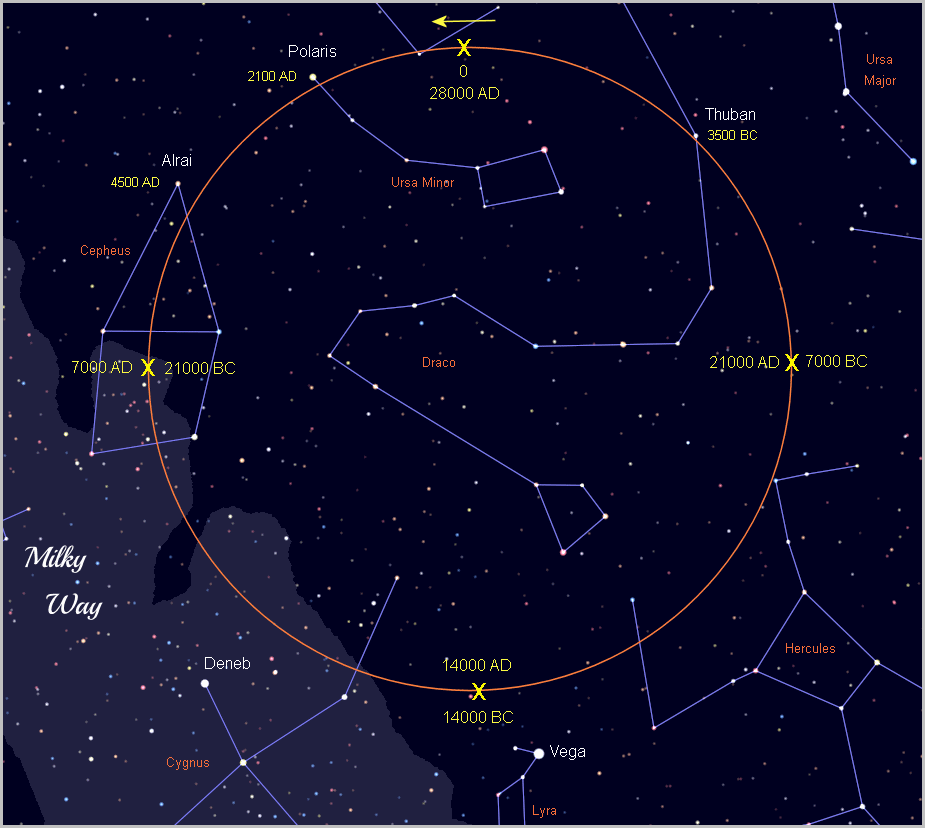
Beta Draconis is named Rastaban, from the Arabic for the dragon's head. Like Thuban it is far away at about 360 light years, but it is much bigger and brighter, being a G2II yellow supergiant with a magnitude of 2.79, making it the third brightest star in the constellation. Also like Thuban it has a small dwarf companion about which little is known.
Gamma Draconis is Etamin, from another Arabic phrase meaning head of the dragon. At magnitude 2.4 it is officially the brightest star in the constellation. It is a K5III orange giant, about 150 light years away.
Delta Draconis is Nodus Secundus, meaning the second knot, marking the second loop in the snake-like body of the dragon, as illustrated in the Jamieson art at the top of the page. If you look carefully you can see circles or clusters of stars where these traditional convolutions or "knots" are depicted. This star is a G9III yellow/orange giant, with a magnitude of 3.07, about 97 light years away.
Epsilon Draconis is named Tyl, from the Arabic for the goat, hearkening back to a time when the four stars making up the second loop of the dragon (delta, epsilon, pi, rho), were thought of as a goat. It is a G7III yellow giant, magnitude 4.0, about 150 light years away.
Zeta Draconis has the traditional name of Aldhibah, from the Arabic for the two hyenas (or jackals or wolves). R.H. Allen pairs the star with the unnamed Eta Draconis just below it, although it seems more properly connected with Dsiban just above it, as the two names both appear to share the Arabic root "Al Dhibain". Aldhibah is a B6IV blue subgiant, magnitude 3.17, about 330 light years from Earth.
Eta Draconis is a big bright G8III yellow/orange giant, with a magnitude of 2.73, and the second brightest star in the constellation, and yet for some reason never formally named by the ancients, leading to conjecture that the star may have been much dimmer in the past. Since the star preceding it and the two following it were named as hyenas by ancient Arabs, it is certainly not unreasonable to associate it with these stars, as Allen does.
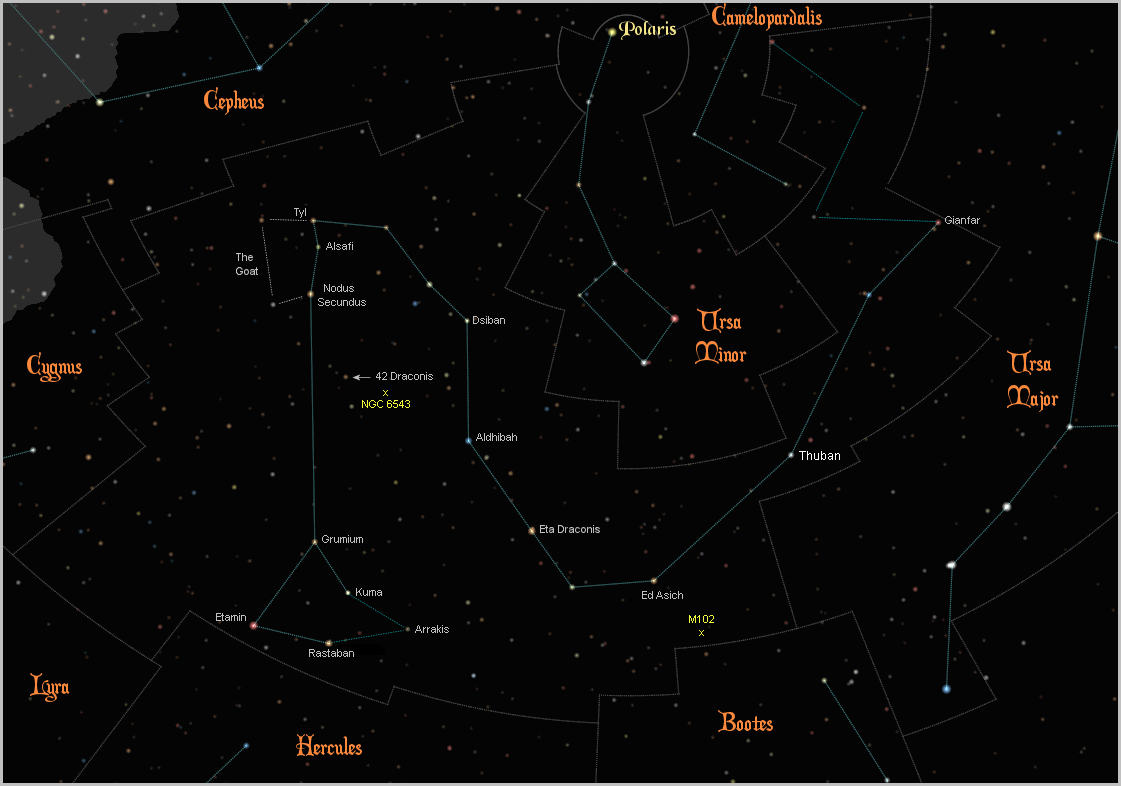
Iota Draconis is named Ed Asich, from the Arabic for the male hyena, making it the third furry predator (along with Aldhibah and Dsiban) that ancient Arabs envisioned in these stars. It is a K2III yellow/orange giant, with a magnitude of 3.29, just over 100 light years away. It has an enormous gas giant planet orbiting it that is twelve times the mass of Jupiter, only slightly under the I.A.U. thirteen mass limit that would classify it as a brown dwarf companion star.
Down near the tail of the dragon, Lambda Draconis has the name of Gianfar, the origins of which are vague and speculative. Quite far away at 335 light years, it is a M0III red giant, with a magnitude of 3.82.
Back at the head of the dragon we find Mu Draconis, with the name of Arrakis, from the Arabic for the trotting (or dancing) camel. This goes back to another ancient Arabic tradition in which the group of stars that now make up the dragon's head represented a herd of camels known as "Al Awaid", the Mother Camels. Arrakis is a binary system, consisting of two almost identical F6V yellow main sequence stars, with a combined magnitude of 4.92, about 90 light years away.
Right beside it is Nu Draconis, with the name of Kuma, the source of which remains a mystery. Like Arrakis, it is another binary system of near identical stars. In this case however, the stars are both hotter A5V white main sequence stars, with a total magnitude of 4.13, about 100 light years away.
Ksi Draconis is named Grumium, from the Greek for the dragon's jaw. It is a K2III orange giant, with a magnitude of 3.73, about 112 light years away.
Sigma Draconis has the name of Alsafi, as it traditionally represented one of the three legs (along with Tau Draconis and Upsilon Draconis) of the Arabian "Athafiyy", the tripod desert nomads used for cooking. It is a G9V yellow/orange main sequence star with a magnitude of 4.67. It is also one of the closest stars to Earth, only 18.7 light years away, and as such has been the subject of much study. There is evidence of a companion orbiting Alsafi, but whether it is stellar or planetary is not yet known.
Finally, the thirteenth named star in Draco is Psi Draconis, called Dsiban or Dziban, thought to be from the Arabic "Al Dhibain," the two hyenas, a name shared with Aldhibah, presumably the other half of the pair. Like Arrakis, Dsiban is a binary system composed of two F5V yellow main sequence stars, with a combined magnitude of 4.57, about 75 light years away.
Thanks in large part to NASA's Kepler Mission, we have found 35 stars in Draco with confirmed planetary systems, and two of these stars are easily visible with the naked eye, including the named star Ed Asich, as discussed above. A little dimmer but still easily visible at magnitude 4.82 is the star 42 Draconis. It's a K1III yellow/orange giant, a bit further away at 316 light years, and has a planet about four times the size of Jupiter.
NASA's Kepler Mission found three stars in Draco with Earth-like terrestrial planets, but they are all very far away. It also found a star with no less than seven planets orbiting it, but at a distance of 2,542 light years, even if there was intelligent life there, we wouldn't be able to connect with it anytime soon. For more information on these and other extrasolar planets, visit NASA's New Worlds Atlas, and The Open Exoplanets Catalogue.
Draco is home to one of the most stunning nebulae in the heavens. The Cat's Eye Nebula (NGC 6543), is an expanding sphere of hot gas ejected by a dying star similar to our Sun. The extraordinary image captured by the Hubble Space Telescope below shows a level of complexity never before seen. What looks like circular refraction rings is not an artifact of the camera lens at all, but actual spherical shells of gas, at least twelve of them, ejected from the star at regular intervals, surrounding it like layers of an onion. The Hubble photo is like looking at a cross section of these onion-skin layers - a truly remarkable sight. This is in addition to all the other detailed linear and spherical phenomena surrounding the dying star - enough to keep scientists busy for many years. The nebula has an apparent magnitude of 8.3, and is 3,300 light years away.
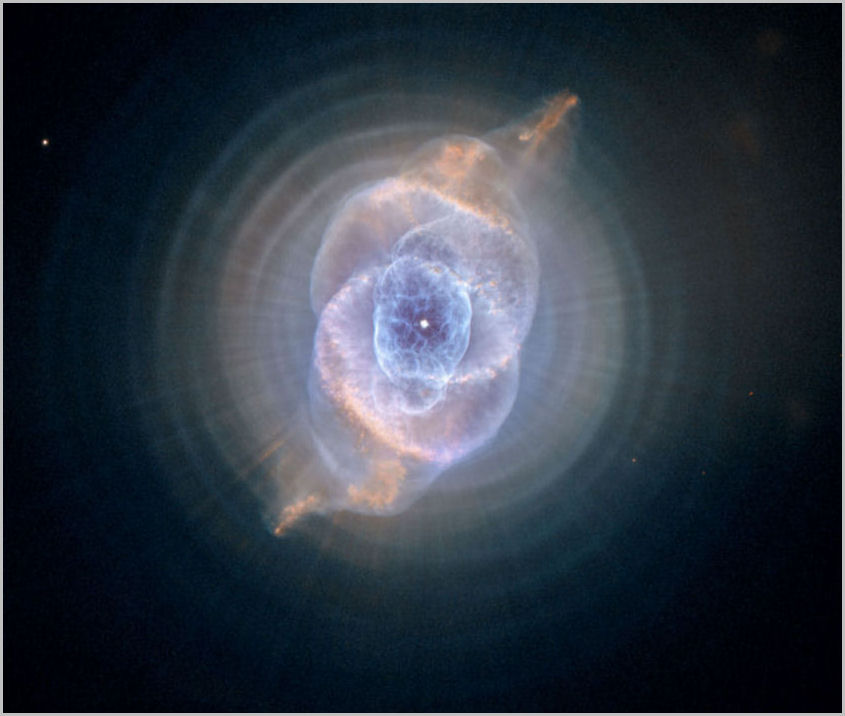
Moving outside our own galaxy, we find the Dwarf Galaxy PGC 39058, a small, irregular galaxy about 14 million light years away. Although it is relatively close as galaxies go, it is small, containing only a few million stars, compared to the hundreds of billions of stars in a large spiral galaxy. Its relative faintness of magnitude 14.8 allows it to be completely overpowered by the magnitude 6.7 star, HD 106381, right beside it.

Next in line is Messier object M102 (NGC 5866), a far away galaxy aligned almost precisely edge-on to our view from Earth, showing us just how thin the disk of a spiral galaxy can be. One of two galaxies known as the Spindle Galaxy (along with NGC 3115), it is classified as a lenticular spiral galaxy, because of its lack of obvious spiral structure. It is 60,000 light years across, about two thirds the size of our Milky Way Galaxy, and 44 million light years away, with an apparent magnitude of 9.9.
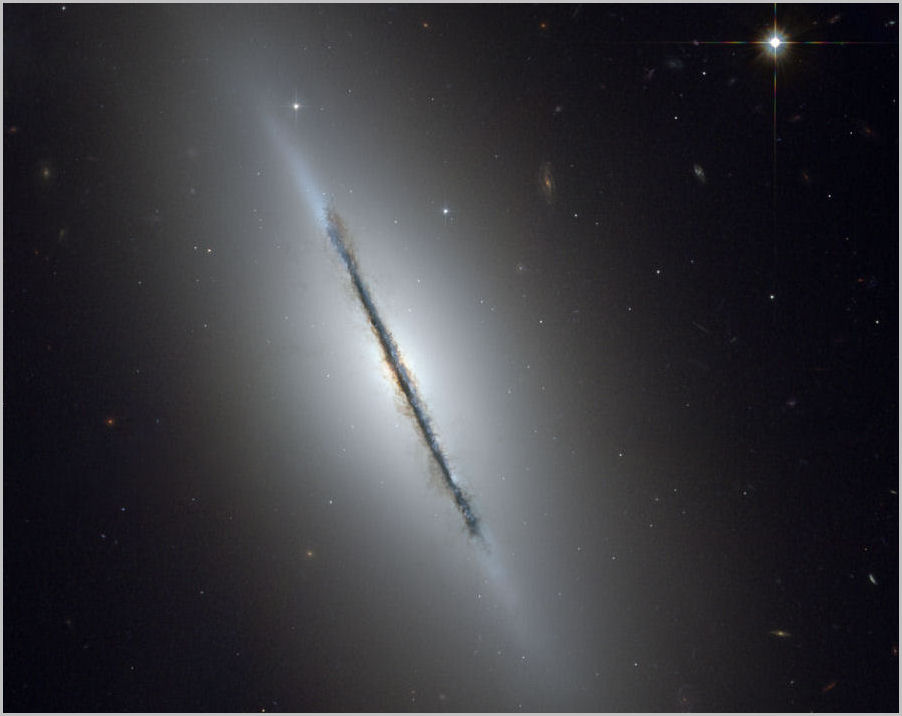
Spiral Galaxy NGC 6503 has a diameter of about 30,000 light years, a third the size of our Milky Way Galaxy. At magnitude 10.2, NGC 6503 sits on the edge of a particularly empty looking area of space called "The Local Void", about 70 million light years away.
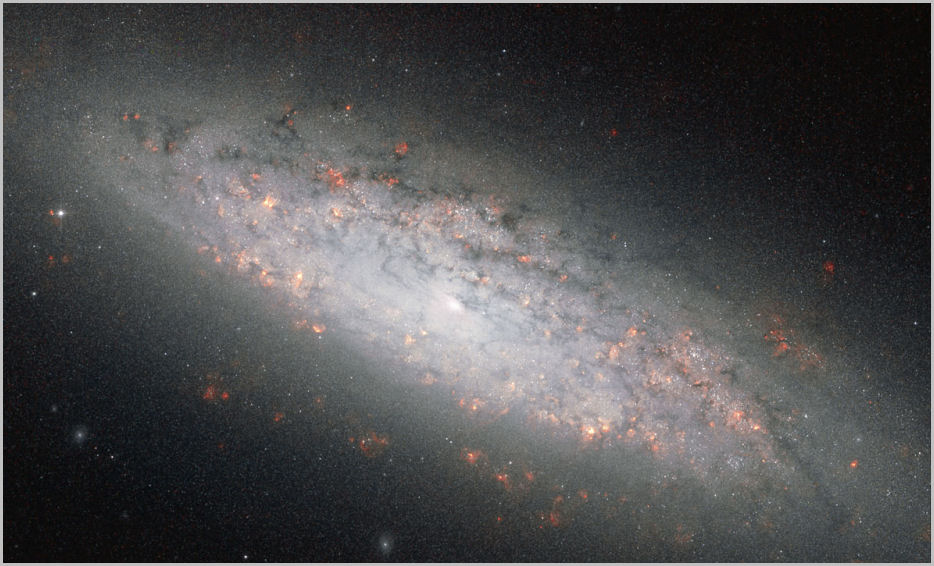
Moving further out into space and entering a world accessible only through the eyes of very large telescopes, we find the merging galaxies NGC 6621 and NGC 6622, 330 million light years away, collectively known as ARP 81, magnitude 13.5.
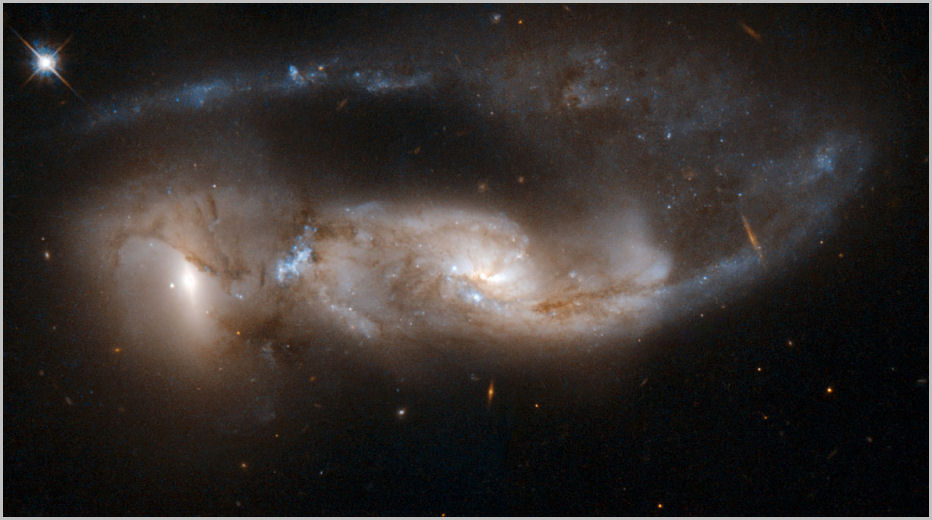
A little further out at 350 million light years we have spiral galaxy NGC 6786 (on the right) beginning to interact with the smaller LEDA 62867 on the left, with a combined magnitude of 12.8.
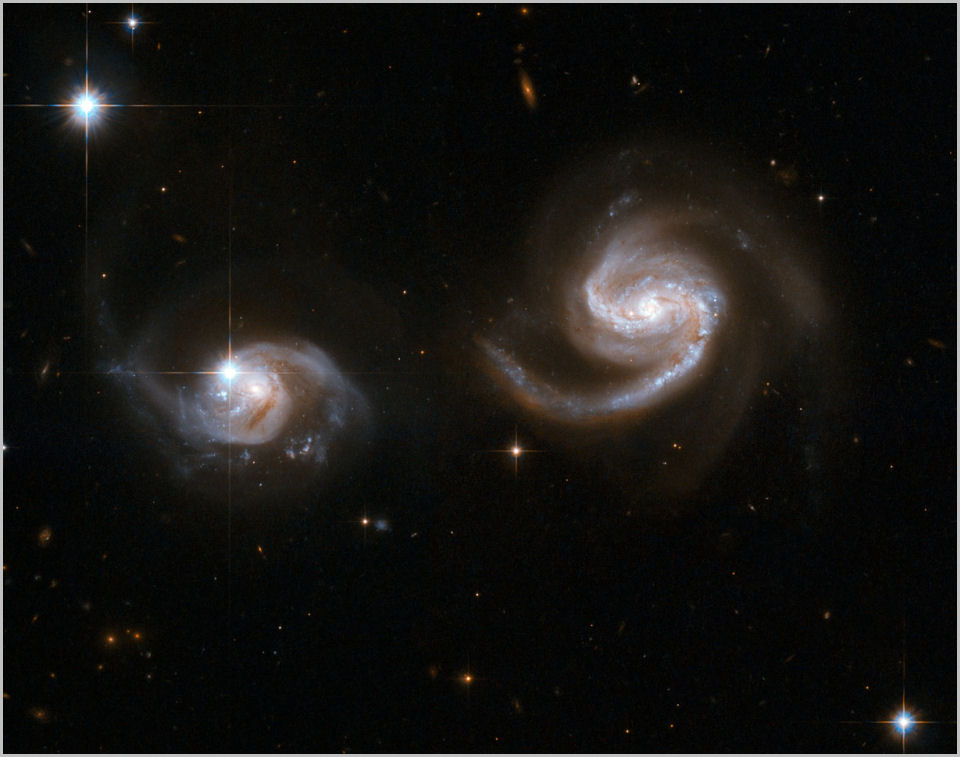
Further out still at 400 million light years two more spiral galaxies are well on their way to becoming one brand new spiral galaxy named NGC 6090, with a combined magnitude of 14.0.
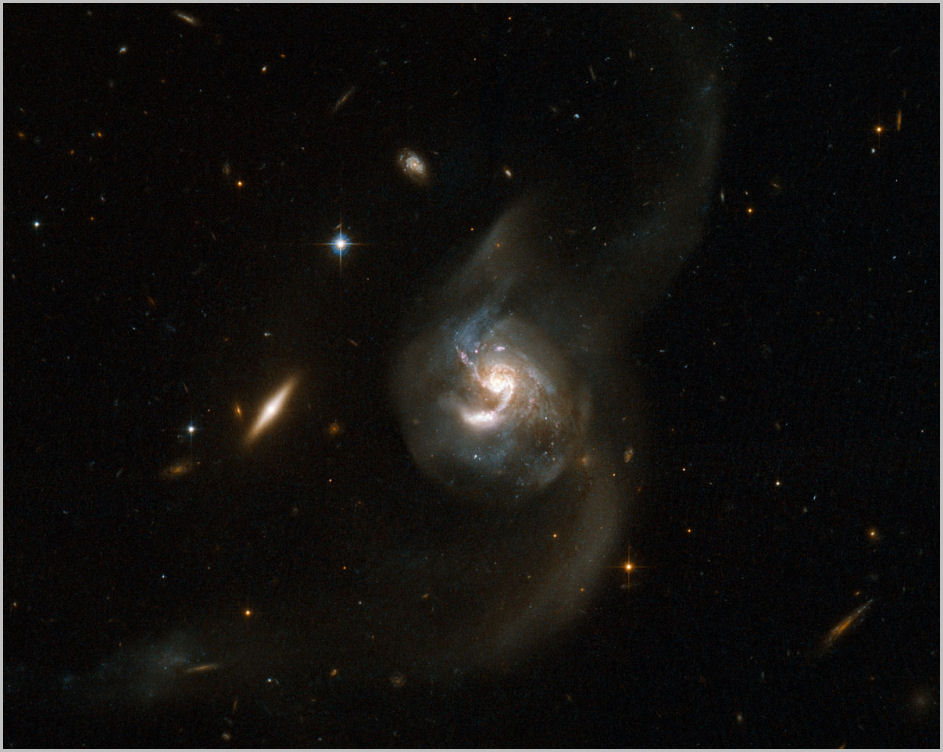
Even further away at 420 million light years is PGC 57129 (UGC 10214), known as The Tadpole Galaxy, a large spiral galaxy that has been impacted and torn apart by a much smaller, blue colored galaxy (upper left of image), causing the spectacular sight of a long stream of stars trailing off into space, like the tail of a huge celestial tadpole.
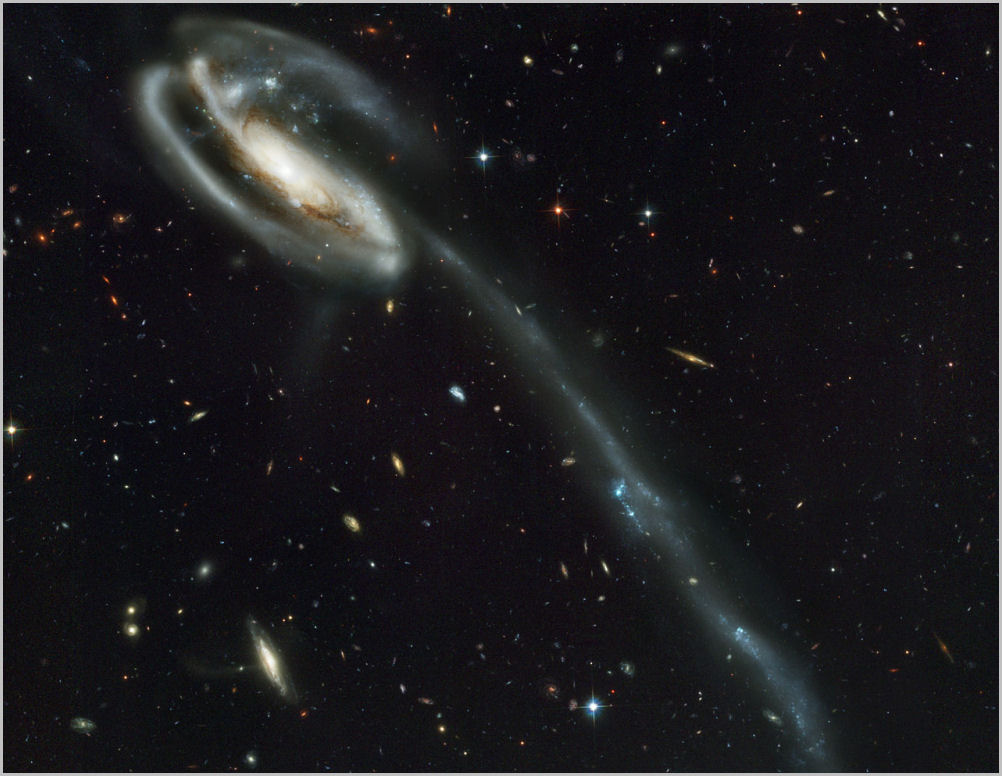
Ten million light years further at 430 million light years is Markarian 817, a spiral galaxy with an enormous black hole at its centre that is consuming the galaxy from within, and ejecting streams of matter out into space.
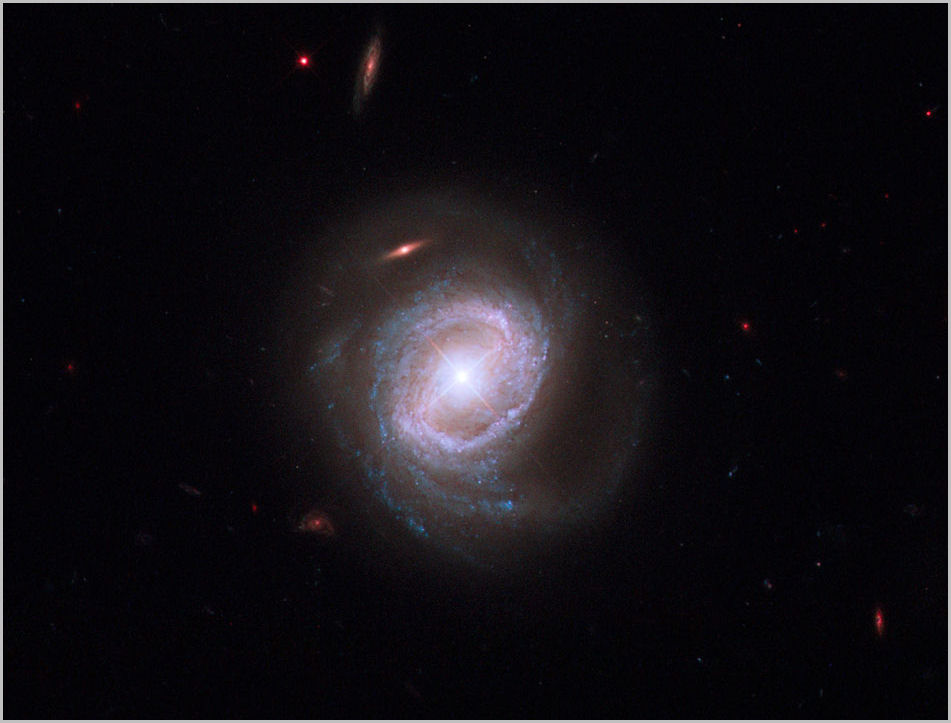
Finally, the Hubble Space Telescope takes us far, far away, out to the incomprehensible distance of 2.1 billion light years (and 2.1 billion years back in time), showing us Abell 2218, a cluster of thousands of galaxies stretching off into infinity, challenging our very perceptions of time and space itself.
The image below also demonstrates the effects of "gravitational lensing" in which the massive gravity well of a large galaxy cluster is so powerful it warps space/time around it, distorting and magnifying distant objects behind the cluster that would normally be too far away to see.
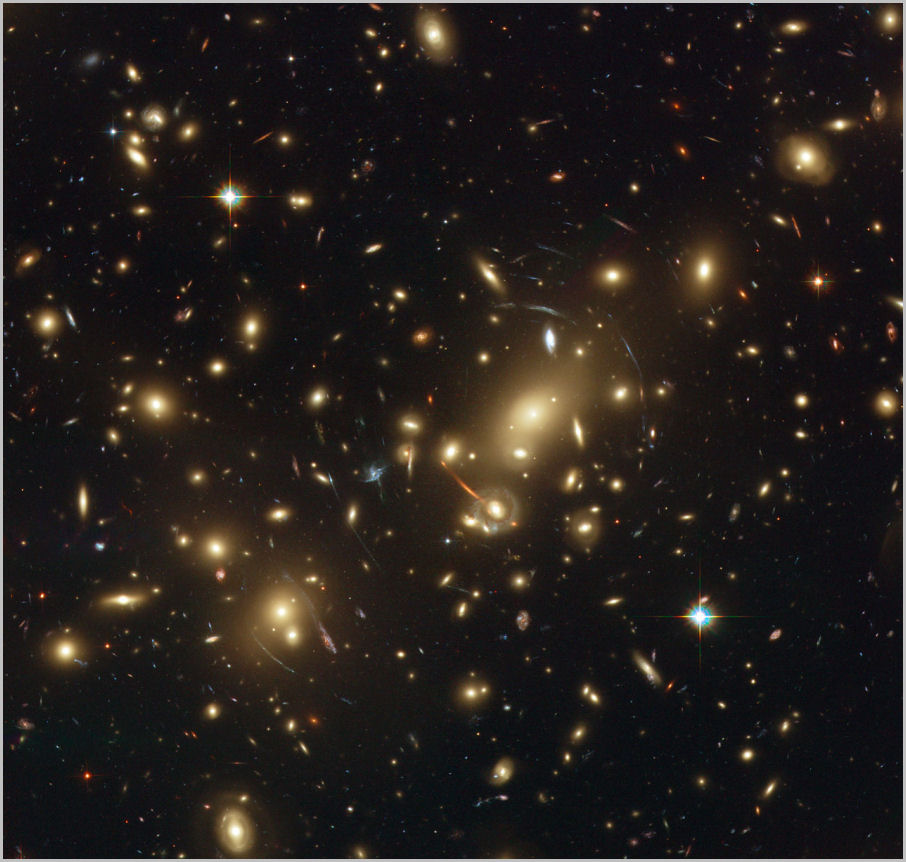
|
|
|
|
|
|